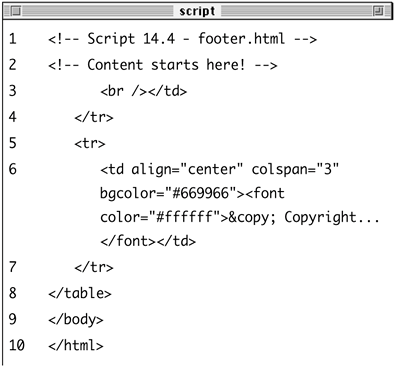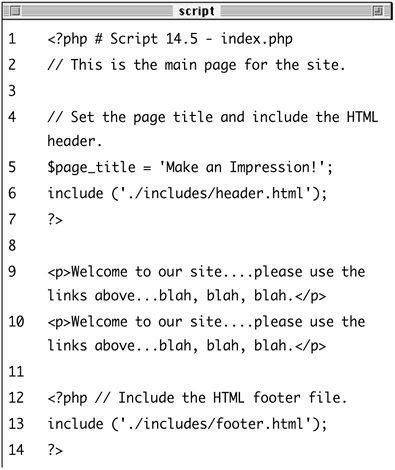Creating the Public Template
| Before I get into the heart of the public side, I'll need to create the requisite HTML header and footer files. I'll whip through these quickly, since the techniques involved should be familiar territory by this point in the book. To make header.html
To make footer.html
To make index.php
|
EAN: 2147483647
Pages: 166


 XHTML 1.0 Transitional//EN "http://www.w3.org/TR/xhtml1/DTD/
XHTML 1.0 Transitional//EN "http://www.w3.org/TR/xhtml1/DTD/  content="text/html; charset=
content="text/html; charset= 



 Tips
Tips